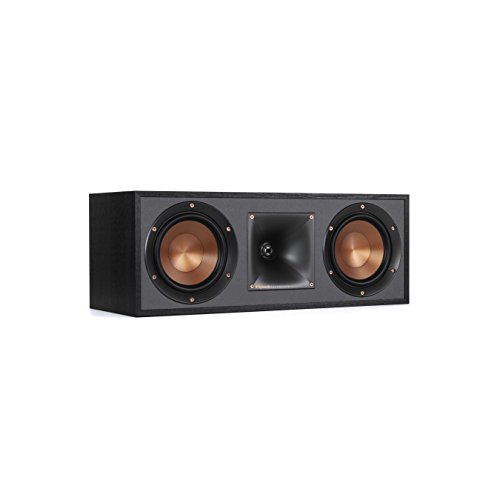Are you looking for a way to upgrade your home entertainment experience? Surround sound systems are the perfect choice for enjoying your favourite music, movies, and games with an immersive sound experience. With the latest advancements in technology, surround sound systems are now more affordable and efficient than ever before.
- 1. What are surround sound systems?
- 2. Types of surround sound systems
- 3. Which does A typical surround sound system consists of?
- 4. Tips for buying Surround sound system.
- 4.1. Determine your budget
- 4.2. Evaluate your needs
- 4.3. Room size and layout
- 4.4. Research different brands and models
- 4.5. Speaker configuration
- 4.6. Compatibility and connectivity
- 4.7. Audition the system if possible
- 4.8. Consider future expandability
- 4.9. Warranty and after-sales support
- 4.10. Purchase from reputable sellers
- 5. In Conclusion
What are surround sound systems?
Surround sound systems are audio setups that aim to create an immersive audio experience by utilizing multiple speakers placed strategically around a room. These systems are commonly used in home theaters, gaming setups, and other entertainment environments to enhance the audio quality and provide a more realistic and engaging sound experience.

Types of surround sound systems
There are several types of surround sound systems available on the market. The most common types include:
5.1 Surround Sound
This is the most popular and widely used surround sound configuration. It consists of five speakers and one subwoofer. The "5" refers to the five main speakers: front left, front right, center, rear left, and rear right. The "1" represents the subwoofer, which is responsible for low-frequency sounds and adding depth to the audio.
7.1 Surround Sound
This configuration builds upon the 5.1 setup by adding two additional rear speakers. In addition to the five main speakers and subwoofer, it includes rear left back and rear right back speakers. The extra speakers provide a more immersive audio experience, particularly for larger rooms or home theater setups.
9.1 Surround Sound
The 9.1 configuration expands further on the 7.1 setup by adding two more overhead or height speakers. These additional speakers are usually placed above the main left and right speakers to create a three-dimensional audio effect. This configuration is often referred to as "Dolby Atmos" or "DTS:X" sound systems, which provide an even more immersive audio experience.
Soundbar Systems
Soundbars are a popular choice for those seeking a compact and easy-to-set-up surround sound system. They usually consist of a single speaker enclosure that incorporates multiple drivers to create a virtual surround sound effect. Some soundbars come with wireless subwoofers for enhanced bass response. While they may not provide the same level of immersion as multi-speaker setups, soundbars offer a convenient and space-saving option.
Wireless Surround Sound Systems
These systems utilize wireless technology to transmit audio signals from the main unit to the speakers, eliminating the need for speaker cables. They can be either 5.1, 7.1, or 9.1 configurations and provide flexibility in speaker placement without the hassle of running wires across the room.
In-Wall or In-Ceiling Surround Sound Systems
These systems are designed to be installed directly into the walls or ceiling of a room. In-wall or in-ceiling speakers offer a clean and discreet look, as they blend seamlessly with the room's decor. They are often used in custom home theater installations or multi-room audio setups.
It's worth noting that these are just a few examples of surround sound system configurations. There are other variations and specialized setups available, depending on specific needs or preferences. It's important to consider factors such as room size, personal preferences, and budget when choosing the right surround sound system for your setup.
Which does A typical surround sound system consists of?
A typical surround sound system consists of several speakers, a subwoofer, and an audio/video receiver. The speakers are positioned to deliver sound from different directions, creating a three-dimensional audio field. The most common configuration is known as "5.1," which includes five main speakers and one subwoofer. The main speakers are placed as follows:
Center speaker: Positioned above or below the screen, it primarily handles dialogue and other center-channel audio.
Front left and right speakers: These are placed on either side of the screen to provide stereo sound effects and music.
Surround left and right speakers: These speakers are positioned to the sides or behind the listener to deliver ambient and background sounds.
The subwoofer is responsible for producing low-frequency sounds and adding depth to the audio experience. It is typically placed on the floor to take advantage of the room's acoustics and enhance the bass response.
The audio/video receiver serves as the central hub of the surround sound system. It receives audio signals from various sources such as Blu-ray players, game consoles, or media streaming devices and distributes them to the appropriate speakers. The receiver also decodes surround sound formats, such as Dolby Digital or DTS, and optimizes the audio output for the specific speaker configuration.
In addition to the 5.1 setup, there are more advanced configurations available, such as 7.1, 9.1, and even 11.1, which add additional surround and overhead speakers for an even more immersive experience. Furthermore, newer technologies like Dolby Atmos and DTS:X support object-based audio, enabling sound to be placed and moved in three-dimensional space, allowing for a more precise and lifelike audio experience.
When choosing a surround sound system, consider factors such as speaker quality, power output, compatibility with your audio/video devices, and the size and layout of your room. It's also important to ensure proper placement and calibration of the speakers to achieve optimal sound performance.
Tips for buying Surround sound system.
When buying a surround sound system, there are several factors to consider to ensure you make an informed decision. Here are some tips to help you with your purchase:
Determine your budget
Set a budget range that you are comfortable with. This will help you narrow down your options and focus on systems within your price range.
Evaluate your needs
Consider the purpose of your surround sound system. Are you primarily using it for movies, gaming, or music? Knowing your specific needs will help you choose a system that suits your preferences.
Room size and layout
Take into account the size and layout of the room where you plan to install the system. Different systems have varying power outputs and speaker configurations that may be better suited for different room sizes.
Research different brands and models
Read reviews, compare features, and check the reputation of different brands and models. Look for systems that have positive feedback regarding sound quality, reliability, and customer support.
Speaker configuration
Decide on the type of speaker configuration you want. Common setups include 5.1, 7.1, and 9.1 systems, which refer to the number of main speakers and subwoofers. The higher the number, the more immersive the sound experience.
Compatibility and connectivity
Ensure that the surround sound system you choose is compatible with your existing audio/video equipment, such as your TV, gaming console, or Blu-ray player. Check the available connectivity options, such as HDMI, optical, or Bluetooth, to ensure seamless integration with your devices.
Audition the system if possible
If feasible, visit a store or attend audio demonstrations to listen to different surround sound systems in person. This will give you a better sense of the sound quality and help you make an informed decision based on your personal preferences.
Consider future expandability
If you anticipate expanding your system in the future, consider options that allow for additional speakers or the integration of wireless technologies. This will provide flexibility and room for growth.
Warranty and after-sales support
Look for systems that come with a warranty, as it provides peace of mind in case of any defects or issues. Additionally, research the manufacturer's reputation for customer support to ensure a smooth experience if you require assistance down the line.
Purchase from reputable sellers
Buy from authorized dealers or reputable online retailers to ensure you receive genuine products and reliable customer service.
Remember, personal preferences play a significant role in selecting a surround sound system. Take your time, compare options, and choose the one that best suits your needs, budget, and listening preferences.
In Conclusion
Enhance your home theater experience with a surround sound system. By adding speakers around the room, you can create an immersive experience that will make movies and TV shows more enjoyable. We hope a above brief overview of surround sound systems to help you make the best decision for your home theater. Don’t forget to read our reviews to have best selection for yourself. Amazon always try the best to offer you the best qualitity and best price product. Join with us.











